Apple Unveils Apple Watch Series 6 and Apple Watch SE
With Apple warning that the next iPhone would be delayed by a few weeks (see “Apple Q3 2020 Breaks Records While the World Burns, Next iPhone to Be Fashionably Late,” 30 July 2020), it wasn’t surprising that the company’s “Time Flies” product announcement event focused on two other product lines that are often relegated to second-fiddle status.
In addition to new iPads (dissected by Josh Centers in “Apple Redesigns iPad Air, Updates Base-Model iPad” 15 September 2020), Apple unveiled a pair of Apple Watch models. These include the flagship Apple Watch Series 6 with new, advanced capabilities—including a blood oxygen sensor—along with a lower-cost Apple Watch SE that has some of the new features found in the Series 6.
The announcements also included a couple of cool new watch bands and a Family Setup system that will make it possible to give an Apple Watch to children and seniors who don’t have their own iPhones.
Apple Watch Series 6 Basics
Under the hood, the Apple Watch Series 6 sports a new dual-core S6 processor to launch apps 20% faster while maintaining 18-hour battery life. Apple says the S6 is based on the A13 Bionic in the iPhone 11. In addition, the Apple Watch Series 6 has new Ultra Wideband antennas for short-range wireless connectivity intended to enable new uses, such as using the watch as a digital car key.
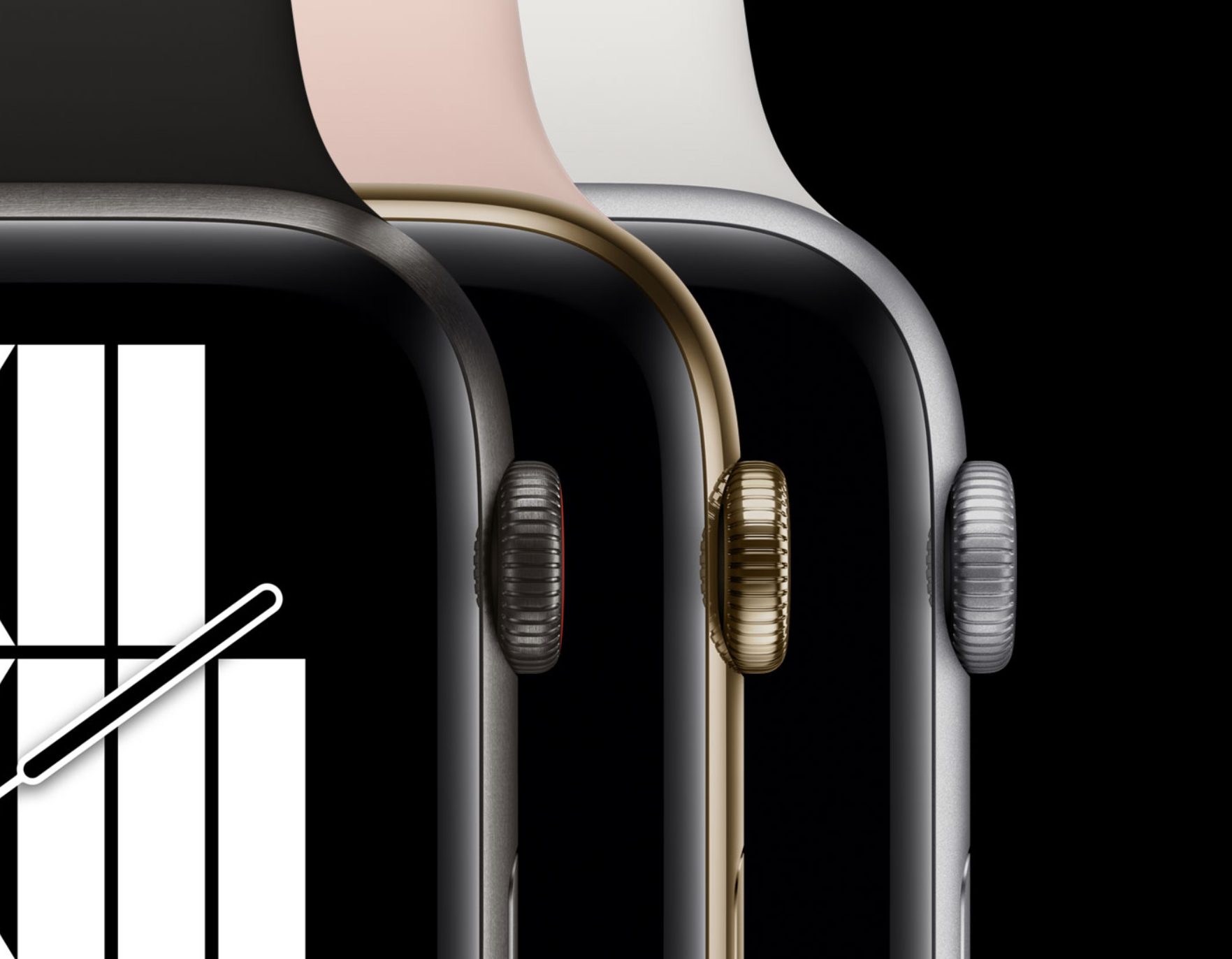
Also new in the Apple Watch Series 6 is an enhanced Always-On Retina display that is 2.5 times brighter in sunlight when your wrist is down. In that wrist position, you can access Notification Center and Control Center, tap complications, and change faces without having to wake the screen.
The Series 6 also features an always-on altimeter display that taps a new, power-efficient barometric altimeter along with details gleaned from nearby GPS and Wi-Fi networks for on-the-fly elevation detection. It is accurate to about a foot, and you can display it as a watch face complication or as a workout metric.
In terms of colors, the aluminum Apple Watch Series 6 line boasts a new blue shade along with the existing silver, space gray, and gold options. In addition, an eye-catching (PRODUCT)RED watch with a matching red band is now available. The stainless steel line now includes a graphite color—what Apple describes as “a rich gray-black hue with a striking high-shine finish”—and silver and an “updated” classic yellow gold color. Titanium models also are available in a couple of colors, including space black.
The Apple Watch Series 6 starts at $399, with the cellular model starting at $499.
Blood Oxygen Tracking
Pulse oximetry, the technical term for measuring the percentage of oxygen being carried by red blood cells from the lungs to the rest of the body, has become more mainstream lately because of the COVID-19 pandemic. Poorly oxygenated blood is a possible symptom of COVID-19, which has triggered a run on low-cost sensors that clip over fingertips.
Apple’s addition of the blood oxygen sensor and companion app to the Apple Watch Series 6 is a timely enhancement. However, we won’t know how its accuracy and sensitivity compare to traditional medical instruments until the public gets its hands on it.
Apple says the sensor on the watch’s back crystal incorporates four clusters of green, red, and infrared LEDs, along with four photodiodes, to improve accuracy and compensate for natural variations in the skin. The readings are achieved by measuring light reflected back from blood to determine its color.
The watch’s Blood Oxygen app uses a custom algorithm that can detect blood oxygen saturation between 70% and 100%. You can initiate a reading anytime, though you have to hold still for 15 seconds. Background measurements also occur when you’re inactive, like during sleep. All such data is added to the Health app, and you can track blood oxygen trends over time.
Apple announced several new medical research projects related to the Blood Oxygen sensor. The company will work with:
- The Seattle Flu Study at the Brotman Baty Institute for Precision Medicine and faculty from the University of Washington School of Medicine to learn how signals from Apple Watch apps, like Heart Rate and Blood Oxygen, could serve as early signs of respiratory conditions like influenza and COVID-19
- The University of California, Irvine, and Anthem to examine how longitudinal measurements of blood oxygen and other physiological signals can help manage and control asthma
- The Ted Rogers Centre for Heart Research and the Peter Munk Cardiac Centre at the University Health Network to better understand how blood oxygen measurements and other Apple Watch metrics can help with management of heart failure
Apple Watch SE
Rumors of a low-cost companion to the Apple Watch Series 6 turned out to be true—but the new Apple Watch SE is not the lowest-cost watch since Apple is keeping the Apple Watch Series 3 around as an entry-level (and increasingly ancient) model.
The Apple Watch SE is essentially a rebranded Apple Watch Series 5—minus the ECG—but otherwise with welcome improvements. The Apple Watch SE has the same accelerometer, gyroscope, and always-on altimeter as the Series 6. It has the same Retina display as the Series 6, but without the Always-On capability. Other features include fall detection, noise monitoring, Emergency SOS, the latest speaker and microphone array, and a Digital Crown with haptic feedback.
The aluminum Apple Watch SE is available in gold, silver, and space gray case finishes, and it’s compatible with all Apple Watch bands (including the new ones described below).
The Apple Watch SE starts at $279, with the cellular model starting at $329. By comparison, the Apple Watch Series 3 starts at $199 and has no cellular model option.
New Watch Bands
Apple, always out to delight watch band collectors—you know who you are—has debuted several new band styles. Along with minor variations on its Hermès and Nike Sport band lines, the company has unveiled two band styles with features not seen before:
- Solo Loop and Braided Solo Loop: These are continuous and stretchable bands that lack clasps, buckles, and overlapping parts. Apple describes the soft silicone Solo Loop as having “a smooth, silky finish” due to an ultraviolet light treatment. It’s available in six colors. The Braided Solo Loop interweaves 16,000 recycled polyester yarn filaments with ultrathin silicone threads to achieve stretchability. It’s available in five colors and incurs a $50 price increase. Both bands are available in a choice of nine lengths for precise sizing—Apple provides a printable sizing guide.
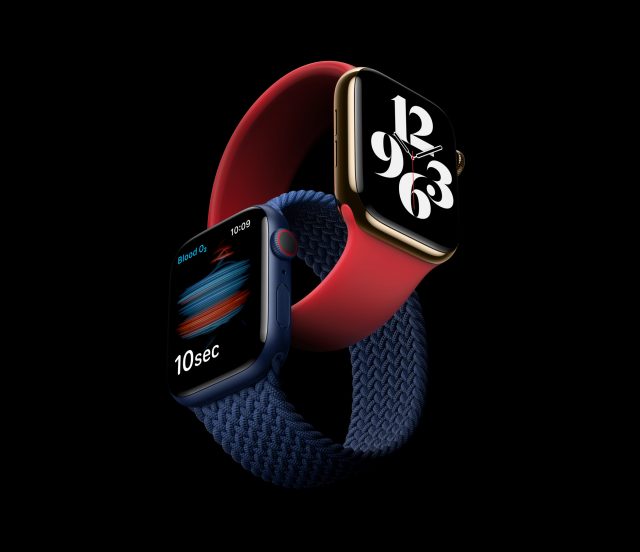
- Leather Link. This band wraps around your wrist and attaches on the other side with flexible, molded magnets.
Family Setup
Since the initial release of the Apple Watch, it and the iPhone have worked in pairs. Apple is now altering that formula with a new feature called Family Setup, largely intended for parents of young children and those who serve as caregivers for the elderly.
The idea behind Family Setup is to let kids or seniors have their own watches even though they might not have iPhones. Instead, the watches are all linked to a single iPhone that’s operated by the person supervising this arrangement.
That responsible party can track the other users’ locations, determine with whom they can communicate, enforce a restricted Schooltime mode that keeps kids focused on their schoolwork, and so on.
Other notable features:
- Parents can send a child money to spend on their Apple Watch using Apple Pay. Parents receive notifications when such purchases occur and can review transactions in Wallet on the master iPhone.
- Location notifications via Find People on the Apple Watch are more customizable, allowing the guardian to receive updates on a kid’s whereabouts on one occasion, or on a recurring basis.
- Activity rings have been optimized for kids to track Move minutes instead of calories burned and provide customizable goals for the Exercise and Stand rings. Outdoor Walk, Outdoor Run, and Outdoor Cycle workouts have been tuned for kids, giving credit for Move minutes, exercise, distance, and other metrics. Coaching notifications are tailored to relevant reading levels and made more fun with emoji.
The watch-only users have their own phone numbers through separate cellular plans, and control their own Apple IDs and all the features those enable.
Family Setup works only with cellular models of Apple Watch Series 4 or later, and it will initially work only in the United States and 11 other countries.
New Watch Faces
As usual, Apple announced a few new Apple Watch faces that provide previously unseen features.
- The Stripes face has striped patterns in customizable colors and positions that help you show pride in who you are, support a favorite sports team, or match what you’re wearing.
- The Memoji face brings your favorite Memojis to your watch. They move and react to your touch.
- The Typograph face displays numerals in three custom type styles and four different scripts.
- The GMT face shows multiple time zones and takes into account where you are.
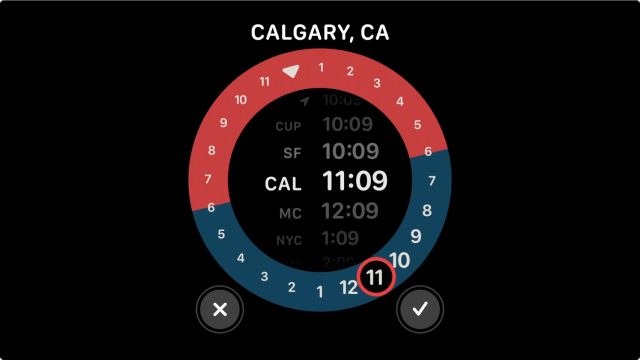
- The Count Up face tracks elapsed time from any given point.
- The Chronograph Pro face features multiple time scales, including a tachymeter to measure speed based on time traveled over a set distance.
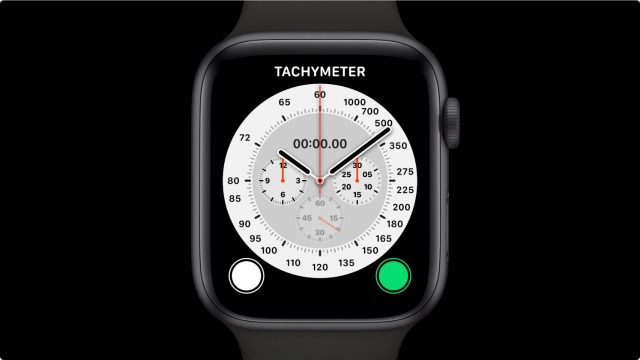
- The Artistic face, in a collaboration with artist Geoff McFetridge, shows millions of possible combinations of stylized human heads that animate when you raise your wrist.
The GMT, Chronograph Pro, Count Up, Memoji, Stripes, and Typograph faces are limited to the Apple Watch Series 4, Series 5, and Series 6, along with the Apple Watch SE.
Apple also highlighted new tools in watchOS 7 for developers to create specialized watch faces for surfers, photographers, medical professionals, and the like. The complication to provide information on the “golden hour” for photographers garnered the most interest in the SlackBITS group watching the event together. There must not be many surfers in the TidBITS crowd.
Few Surprises
These Apple Watch announcements may have seemed anticlimactic to those who have been following the industry speculation because almost everything—including the Apple Watch Series 6 and the Apple Watch SE—had been expected. The event had only minor surprises, most notably the Family Setup feature.
As usual, Apple incrementally advanced the Apple Watch state of the art while smartly revealing one hot new feature, the Blood Oxygen app and sensor, to get tongues wagging in a COVID-19 context.
It’s somewhat odd that Apple has kept the increasingly elderly Apple Watch Series 3 around, although it’s obviously to provide a low-cost entry point into the Apple Watch ecosystem. But why the Series 3, when Family Setup works only with the Series 4 and later? (In part, that may be because you can’t buy a cellular-capable Series 3 anymore.) Families that want to outfit their children or seniors will have to go for an Apple Watch SE instead.
Nonetheless, the Apple Watch Series 3 anchors the lineup at $199, with the Apple Watch SE providing many of the new capabilities starting at $279, and the Apple Watch Series 6 starting at $399. That’s a rational price spread that matches with increased capabilities. And anyone who wants to spend more can easily do so with stainless steel and titanium models of the Series 6, along with the Hermès models.
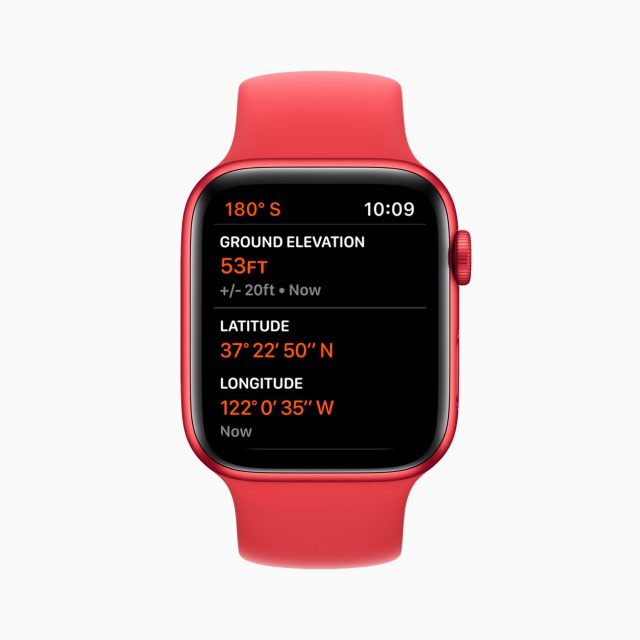
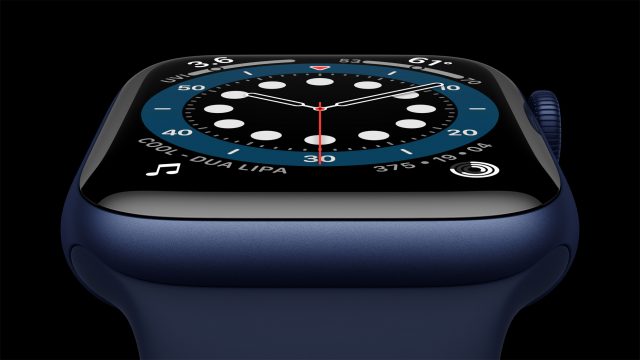
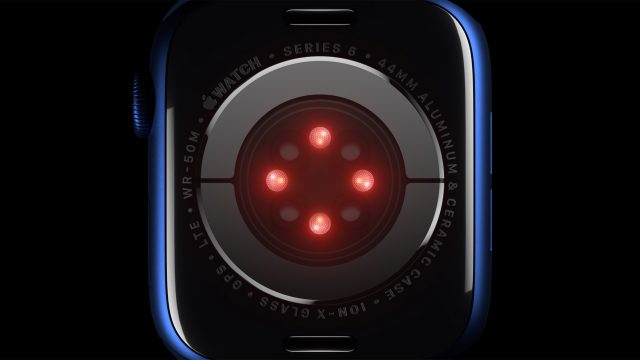
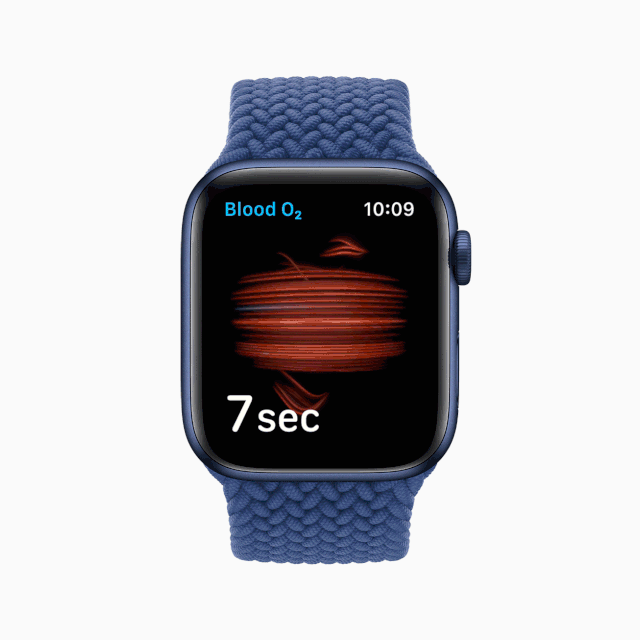
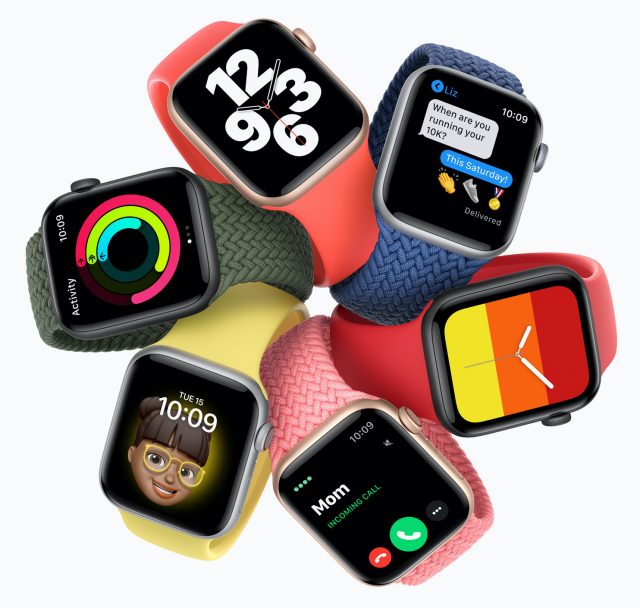
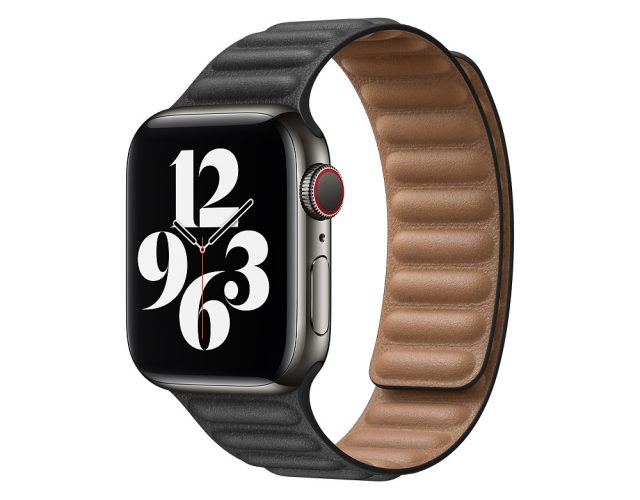
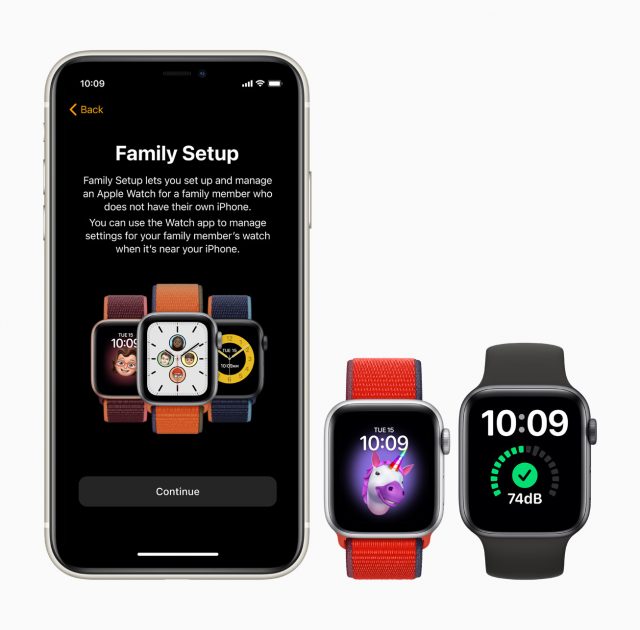
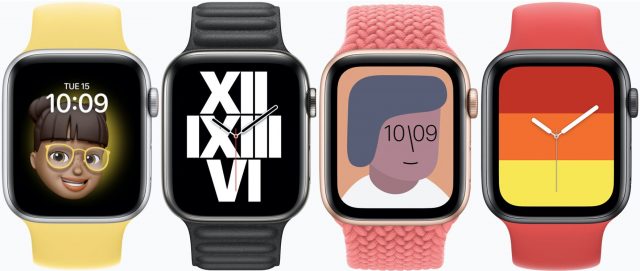
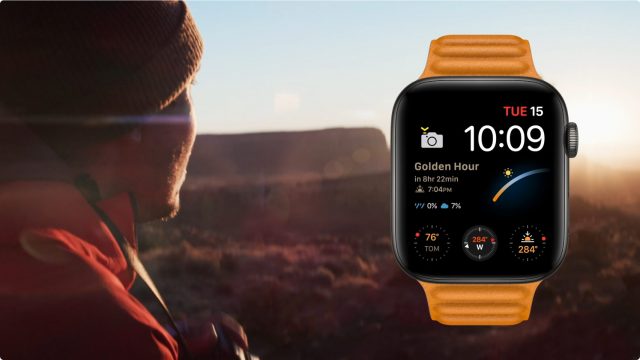
I watched the event last night, but as a non-watch user, found it difficult to track what was new, what was interesting, etc. Thanks for a great article that sets it all out clearly and concisely! (TidBITS never lets me down )
)
One question, though, @julio. You state:
But reading through the details and also having a look at Apple’s product page, it sounds more like the SE is a Series 6 minus some of the more advanced features. Is there a reason you consider it more based on the Series 5 than the Series 6?
Will the blood oxygen sensor require the same regulatory approvals in every country that we saw for the ECG—so that it might be a long time, in some places, before it can actually be used?
It’s using the same processor as the S5 rather than the S6.
The other difference with the S5 is that there is no always on display in the SE as there was with the S5. Otherwise, it’s just like the S5, just without the ECG and the always on display.
Not according to DC Rainmaker’s review. Apple apparently didn’t seek approval. This puts them in the same boat as Garmin, I believe, who’s had SpO2 on one or more of their watches for a couple of years now. As with “running power” or “cycling dynamics”, no one really knows what good having this actually does.
I was holding off buying a S5 last week to see what Apple was going to peddle. The 6 seems logical, but the use is still … well…bizarre. I mean, I would take my analog watch off to sleep. But with an Apple watch, isn’t this when you charge it? So that unless the battery lasts a week (it only last 18hrs on a charge), this really doesn’t make sense if you want to monitor daily HR/Blood O2 and nightly sleep patterns. They want you to buy two (one charges/other is worn)? Perhaps I am not the ideal market segment. And the SE is the crippled 5, right? Thanks for writeup. I expect more comparisons of the 6 as we go one. Dreading the iOS14 surprises today… maybe I should wait till the iOS14.1…
It depends on the regulations of each country. Interestingly, ECG was built into the very first edition of Apple Watch in anticipation of it being quickly approved by the FDA. I wonder if the current Covid 19 crisis might have helped facilitate approval?
I charge mine for about an hour in the morning when I’m getting ready, and top it off before I go to bed at night if it needs it. Works fine.
Generally, yes, but I find that charging for about thirty minutes to an hour before I go to bed is more than enough to get through the night. And you can charge again when you wash up for the day after you wake up, while you eat breakfast, etc. And Apple claims that the S6 charges faster than previous watches, like my S5 and S2.
I’ve been wearing a watch to bed and using a sleep tracking app, Auto Sleep, for the last year or so. I generally charge the watch in the morning (during shower, breakfast, and getting dressed) and top it off at night before going to bed.
Over the last few months, the Apple Watch 4 seems to have increased its discharge rate, losing 30-40% of charge overnight and 30% or so during the day. I did purchase an upgrade to a 6 yesterday with a trade-in of the old watch.THe old watch was valued at $140, so the net cost wa under $300. The new watch should arrive next week.
Ah, I’d missed that, thanks! Makes sense.
I’m reluctant to wear my Apple Watch in bed because it has a Milanese Loop band, and there’s the whole hair-getting-caught issue with my wife’s hair
A detail emerged when I was trying to configure my dream Watch Series 6 today (I’ve never had an Apple Watch and I still don’t know if I can afford one); in the web pages describing the detail, one is warned that “Some straps contain magnets and may cause interference with Compass on Apple Watch”! Is this an admission of a design fault? I called the Apple sales team and they told me that the Sports Band contains a magnet - sad, as it seems one of the more secure strap designs. It seems strange that Apple got all the way to the announcement of the device and then had to warn potential purchasers not to buy some of the offered equipment! I’m still wondering whether to buy one. I need the compass, by the way.
According to the Apple site, newer models of the Sports Band don’t contain magnets:
“ The presence of magnets can affect the accuracy of any compass sensor. Apple’s Leather Link, Leather Loop, Milanese Loop, and earlier Sport Loop watch bands use magnets or magnetic material that might interfere with the Apple Watch compass. The compass isn’t affected by Sport Loop bands introduced in September 2019 or later, or any version of the Sport Band.”
It continues to amaze me that Apple’s phone and Store support staff tends to be even increasingly less knowledgeable than they used to be.
Yes, it is amazing. But if the modern versions of the straps can’t affect the compass, why did Apple put the warning in their sales info? Do they think people will used old straps in their new watches - is this even possible? Really I’m just looking for an old-fashioned watch strap with a simple buckle, but sadly Apple only offer one for the vastly more expensive stainless steel versions of the watch. Decisions, decisions…
Yes, watch straps going back to the original Apple Watch still fit and work with the SE and S6.
I have several straps and I know that the small fastener in the sport band I bought last year and the stainless steel Milanese loop bands affect the compass. The Milanese loop makes sense, as it is fastened with a magnet. The new solo loops and the existing sport loop bands are probably best if you need to use the compass. (I do not ever need it myself.)
Thanks - I hadn’t done the right research, but now I see that people can and will choose old straps on new watches. I just realised that there is an enormous market for Apple Watch straps from other manufacturers, invariably cheaper than Apple’s own, and in a bewildering array of styles. Decisions again! I am now further confused by a completely different issue: I’m stuck (well, perhaps that’s too pejorative a word) in the South of France since going back home to England is not a brilliant idea right now - so according to Apple I would have to buy my watch in France. Sadly the prices are much higher here than in the UK using any realistic exchange rate. So more decisions!
Last year, while my Apple Watch 4 was being replaced (bad pixel), I tried an Apple Watch 5 for a week and discovered a fatal weakness of the compass that has nothing to do the electronics. Namely, in order to get a reasonable readout, you must place your arm parallel to your body which I find to be somewhat unnatural. Normally, to read a watch, you don’t really care about the angle. I found it much easier to properly hold the iPhone and read the compass there.
By the way, my favorite band to use with a gold aluminum watch case is a brown sports loop that was sold with the Apple Watch 2. It brings out the brownish aspect of the gold, rather than the pinkish aspect.
It still seems funny to me. I haven’t worked with the Apple Watch, but I’ve worked with magnetometer sensors in embedded electronics (which can, among other things, be used to implement a compass).
The sensor reports raw magnetic field levels on three axes, usually relative to the plane of whatever circuit board it is attached to. Any application should provide a calibration mechanism so the software can tease out magnetic fields caused by the device itself and subtract them from its readings in order to read the environment. Your iPhone does this - that’s why you sometimes are told to rotate the phone in various patterns so it can discover what parts of the field vary with direction and which parts don’t (and are therefore produce by the device).
It seems to me that a magnet in the band should be something that a calibration procedure should be able to discover and filter out. Is there such a procedure for an Apple Watch?
Regarding holding your arm parallel, this also surprises me. These sensors are usually 3-axis sensors. It should be able to compute a 3D bearing on which direction is North and the software should have a good way to present it. Much like how your phone doesn’t have to be horizontal for its compass to work.
It’s not whether my arm is level or whether the watch is lying on top or rolled toward me or away from me, but rather the angle in the horizontal plane is the problem. When I normally look at my watch, my arm is in some intermediate position between pointing in the direction I am facing or exactly orthogonal to the direction I’m facing. Yet, I will get a true numerical bearing only if I hold the watch exactly orthogonal to my current direction. It’s true that I can eyeball an approximate bearing when my arm is in an intermediate position, but it’s much less tiring just to pull out an independent compass and hold it to get the exact bearing.
FYI for anyone thinking about ordering one of the new bands.
And Apple has now changed this problematic return policy.
Whenever I tried the nylon sport loop for Apple Watch, it didn’t feel so much as scratchy or rough. Wasn’t comfortable for me, as opposed to smooth Sport loop.
I do still wish watch + band were more lightweight. Ordered Solo Loop with series 6; let’s see what happens.
I wonder if it’s worth upgrading my series 1 Watch to SE. Is there really anything substantially new and useful in my case? Does having built-in GPS make any difference if I always have my iPhone with me on walk workout anyway? And if I always have my iPhone with me is cellular really an extra benefit?
Thanks,
doug
The performance increase between the S1 and the SE is very noticeable, and you will continue to get OS updates for quite a while - the S1 is stuck on watchOS 6. Besides the performance of the watch and the items you list, the differences are better water resistance, a larger and brighter display, fall detection (that can call emergency services or contact emergency contacts if the watch detects that you’ve fallen and you don’t respond to the prompt on the watch), a better speaker and microphone, the compass (I have never used mine on the S5), a better Digital Crown, and - I think - the ability to do “Hey Siri” or Siri commands with raise to talk, with the S1 cannot do (you must press and hold the Digital Crown for Siri). There are also additional workout types, the biggest being swimming workouts, though you would have upgraded before now if you needed that.
I was just trying Siri on my Series 1 the way you said, by holding in the Digital Crown. It worked, but there was no voice reply, just a message on the screen. With the SE would it reply by voice?
I may have turned off sound. I don’t remember. I do remember that when I first got it I couldn’t hear all the alerts (e.g. new message) because… the frequency was too high for my ears! Another friend could hear it just fine. So I turned off all sounds. I think I may have answered the phone with it once though when I was in the kitchen and my iPhone was in the office room.
Swimming might be nice again sometime. I guess I shouldn’t limit myself to walking.
Well, I’ll think about it. First world problem.
Thanks,
douig
The SE (and all watches since Series 3) can have Siri spoken responses if you want them (there is a setting - always on, headphones only, control with silent mode.)
Yes, it is. It will be even better than I experienced going from a Series 2 to a Series 5.
It will be even better than I experienced going from a Series 2 to a Series 5.
You devil you. Now I’m leaning towards the upgrade.
I wonder if it’s worth having cellular though. It’s just an extra $3.50/month with my carrier. But I can’t think of when I’ve gone out without my iPhone in my shirt pocket.
doug
Yeah, I like the idea of the Apple Watch having cellular access, but I’m not willing to pay anything for it, since the times when I’d use it are so few and far between.
Tempting. From your article, I think the two main things (besides the fact that my series 1 can no longer be updated) are (1) You said the size difference between 40 mm and 38 mm was actually quite noticeable, in a good way. That might be nice. (2) Faster response. Sometimes the series 1 can have pauses between actions.
Being able to say Hey Siri might turn out to be useful.
For the extra $3.50 a month I’m pondering whether the cellular is worth it or not…
Oh, and I might start going swimming. I used to do that a lot. Not sure of the pool status these days. But I do record all my exercise for calorie syncing.
Fun to think about anyway!